Arab Spring three years on: Why instability will continue into 2014
updated 12:25 PM EST, Tue December 17, 2013
STORY HIGHLIGHTS
- Political instability has characterized international relations since 2008, writes Andrew Hammond
- Hammond: The impact of the financial crisis has varied from country to country
- The popular uprisings in emerging economies such as Ukraine and Brazil have been eye-catching, he writes
- Hammond: The current "wave" of volatility has been driven by a broad range of factors
Editor's note: Andrew Hammond was formerly a geopolitical analyst at Oxford Analytica, and a special adviser in the UK government of Tony Blair. The opinions expressed in this commentary are solely his.
The protests highlight
the significant political instability that has characterized
international relations since 2008, as was predicted by some. For
instance, in February 2009, U.S. Director of National Intelligence Admiral Dennis Blair asserted that "the financial crisis and global recession are likely to produce a wave of economic crises."

Andrew Hammond
Then Secretary of State Hillary Clinton agreed "this economic crisis, left unresolved ... will upend governments, [and] it will unfortunately breed instability."
Five years on, these U.S.
concerns have been at least partially borne out. However, the political
instability that has ensued has had diverse origins, and the degree to
which the financial crisis has been a driver has varied from country to
country.
In the European Union,
for instance, millions have taken to the streets and administrations in
more than half of the 27 member states fell or were voted out of office
from Spring 2010 to 2012 alone. Within the core eurozone, 11 of 14
governments collapsed or were turfed out during that same two years.
 Ukraine under pressure
Ukraine under pressure
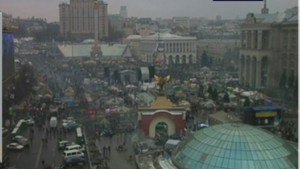 Trade negotiations continue in Ukraine
Trade negotiations continue in Ukraine
 Brazil's rocky road to the World Cup
Brazil's rocky road to the World Cup
Even more eye-catching,
however, have been the political revolutions and popular uprisings in
emerging economies. This includes Ukraine and June's demonstrations in
Brazil (the largest in the country for two decades); through to what has
been called the "Arab Spring" in North Africa and the Middle East,
including the civil war in Syria; revolutionary changes of power in
Egypt, Tunisia, and Libya; transfer of power in Yemen; plus
demonstrations and uprisings in Turkey, Iran, Algeria, Bahrain, Jordan,
Morocco and Oman.
Despite the diverse
nature of this international political instability, from Rio, and
Athens, to Cairo, it has reportedly been described as "a revolutionary
wave, like 1848" by Nigel Inkster, former director of operations for the
UK Secret Intelligence Service. Others have compared the situation to
1914, 1968 and 1989.
Whatever the validity of
these historical analogies, it is clear that the current "wave" of
volatility has been driven by a broad range of economic, political,
social and technological factors. And, these have played out in
contrasting ways across the world.
In the European Union,
for instance, the role of economic downturn and austerity since the 2008
financial crisis has been key, especially in those states most impacted
by the Eurozone crisis like Greece and Spain. Unrest, however, has also
tapped into pre-existing disquiet with established European political
parties and systems.
In the Middle East, by
contrast, protest has often stemmed primarily from deep-seated political
and socio-economic discontent that has existed for many years.
Post-2008, however, factors including liquidity crunches, increased food
prices, and unemployment spikes, have exacerbated these longer-standing
grievances.
A key question is
whether international political instability will tail off in coming
years, especially if economic recovery takes hold in much of the world.
While this is possible, protest and uprising is likely to continue in
some countries for at least two sets of reasons.
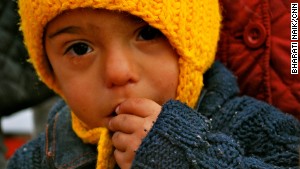 UN refugee agency renews Syria appeal
UN refugee agency renews Syria appeal
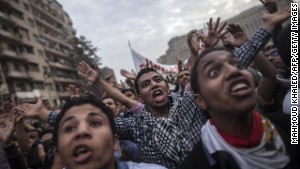 State of activism in Egypt
State of activism in Egypt
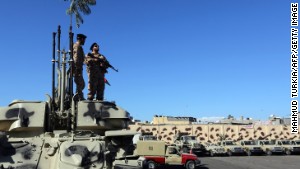 Libya teeters on brink of anarchy
Libya teeters on brink of anarchy
Firstly, even if the
worst of the financial crisis has now passed, its consequences endure,
especially for the increased number of young people who are unemployed.
This puts many at risk of long-term damage to their earnings potential
and job prospects, fuelling discontent.
In the EU, a record 24.4% of people under 25 are unable to find work. This has given rise to concern, including from German Chancellor Angela Merkel about a "lost generation," especially in countries like Greece and Spain where youth unemployment is almost 60%.
As in Europe, youth unemployment in numerous Middle Eastern and North African countries is above 50%,
and it is estimated that the region's average rate could breach 30%
within 5 years. In the Middle East, the problem is acute because it has
the world's biggest youth bulge comprised of increasing educated people.
Secondly, there are some
factors completely unrelated to the post-2008 financial crisis that
will endure, if not intensify. This includes the disruptive role of
social media.
There remains debate
about how instrumental social media has been in fomenting political
instability in recent years, not least in the Middle East and North
Africa. However, whether one sees this new technology as an essential
component that translated discontent into concrete action, or
accentuated what was already-inevitable, indisputably it has played an
enabling role that will likely only grow.
Taken as a whole, it is
premature to claim, as some have done, that we have entered a new era of
global revolution that is here to stay. Indeed, overall political
instability may decline if the world economy enters a sustained
recovery.
However, there remains
significant prospect of political volatility, as the current protests in
Italy and Ukraine underline. While circumstances will vary from country
to country, instability will potentially be fueled not just by legacy
of the financial crisis such as higher youth unemployment, but also
longer-standing political and socio-economic discontent which social
media is giving new impetus.
The opinions expressed in this commentary are solely those of Andrew Hammond.
From Around the Web
-
F1: The man with the knowledge Tech Page One
-
T-Mobile vs Sprint: Family plan feud WhistleOut
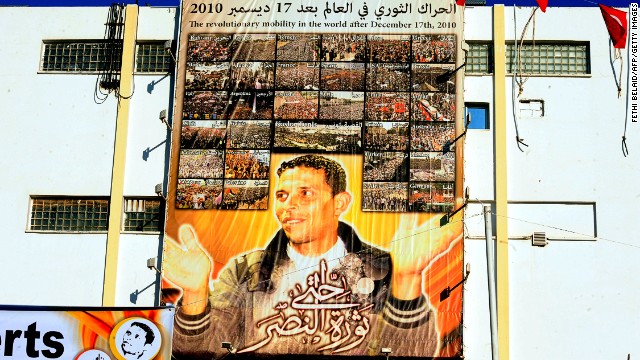 A giant portrait of Mohamed Bouazizi hangs on the wall in the central town of Sidi Bouzid.
A giant portrait of Mohamed Bouazizi hangs on the wall in the central town of Sidi Bouzid.
No comments:
Post a Comment
Please leave a comment-- or suggestions, particularly of topics and places you'd like to see covered